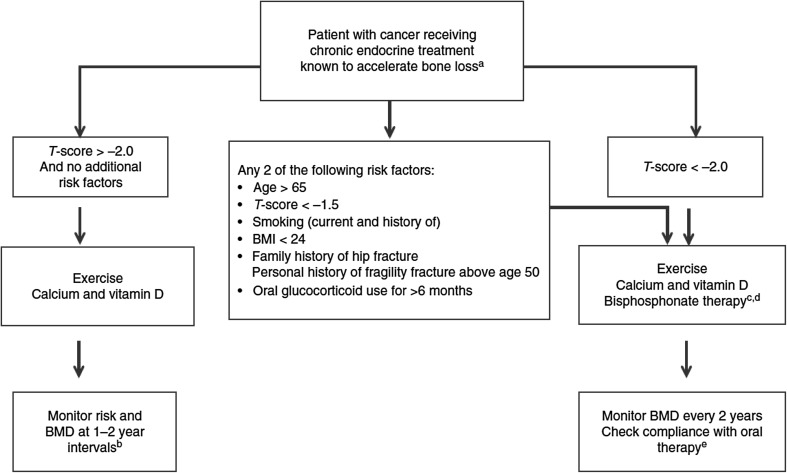Fig. 1.
Algorithm for the assessment and management of cancer treatment-induced bone loss [70]. a Aromatase inhibitors and ovarian suppression therapy/oophorectomy for BC and androgen deprivation therapy for prostate cancer. b If patients experience an annual decrease in BMD of ≥ 10% (or ≥ 4–5% in patients who were osteopenic at baseline) using the same DXA machine, secondary causes of bone loss such as vitamin D deficiency should be evaluated and antiresorptive therapy initiated. Use lowest t score from spine and hip. c Six monthly intravenous zoledronate, weekly oral alendronate or risedronate or monthly oral ibandronate acceptable. d Denosumab may be a potential treatment option in some patients. e Although osteonecrosis of the jaw is a very rare event with bone protection doses of antiresorptives, regular dental care and attention to oral health are advisable. BMD bone mineral density, BMI body mass index, DXA dual-energy X-ray absorptiometry

